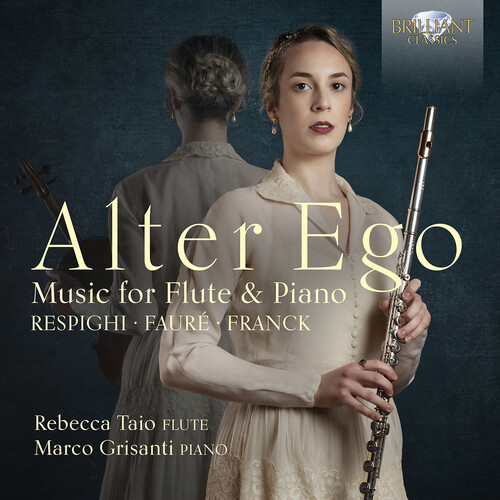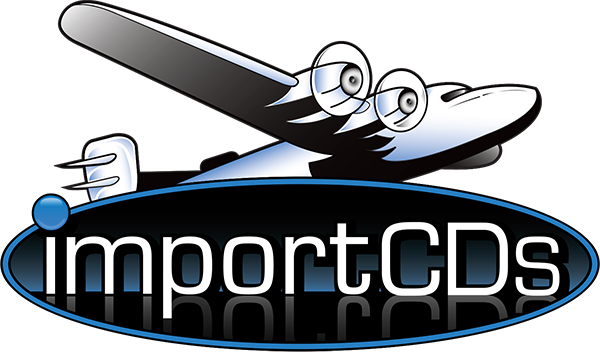Show results for
Deals
- 4K Ultra HD Sale
- Action Sale
- Alternative Rock Sale
- Anime sale
- Award Winners Sale
- Bear Family Sale
- Blu ray Sale
- Blues on Sale
- British Sale
- Classical Music Sale
- Comedy Music Sale
- Comedy Sale
- Country Sale
- Criterion Sale
- Cult Films sale
- Documentaries Sale
- Drama Sale
- Electronic Music sale
- Horror Sci fi Sale
- Kids and Family Sale
- Metal Sale
- Music Video Sale
- Musicals on Sale
- Mystery Sale
- Naxos Label Sale
- Page to Screen Sale
- Paramount Sale
- Rap and Hip Hop Sale
- Reggae Sale
- Rock
- Rock and Pop Sale
- Rock Legends
- Soul Music Sale
- TV Sale
- Vinyl on Sale
- War Films and Westerns on Sale

Alter Ego - Music for Flute & Piano
- Format: CD
- Release Date: 8/25/2023

Alter Ego - Music for Flute & Piano
- Format: CD
- Release Date: 8/25/2023
- Composers: Cesar Auguste Franck, Gabriel Faure, Ottorino Respighi
- Label: Brilliant Classics
- UPC: 5028421969770
- Item #: 2632781X
- Genre: Classical
- Release Date: 8/25/2023

Product Notes
Rebecca Taio's choice to programme these well-known pieces from the great repertoire for violin and piano has to do with the technical challenges they pose, both instrumentally and interpretatively. In the flautist's words: 'It's an incredibly fascinating and stimulating idea for me to try out timbres that are different to the ones I'm usually accustomed to, different to those the majority of composers who have written for the flute have been inspired by. In these transcriptions I have aimed for a more romantic and less delicate way of playing the flute, inspired by the long-drawn-out, sustained phrases and intense vibrato so characteristic of string instruments in this sort of repertoire.' The technical challenges of transcriptions from violin to flute should not be underestimated. While it might seem as though the flute's keys would make some aspects related to intonation 'easier' on the flute, there are difficulties of other kinds, such as playing loudly and with a full tone in the lower register or playing very high notes that fade away to nothing. But this was the whole point: to challenge the intrinsic identity of the instrument and to transcend it's customary role. And so, by way of this repertoire, the expressive capabilities of the flute can be further explored. While the transcription of the Five Pieces by Respighi is a first (no one having thought to arrange them for flute and piano before), the sonatas by Faureì and Franck are already a part of the chamber tradition for flute and piano. Nonetheless, the artists have made further revisions to these two works, coming up with alternative solutions to the ones normally used in such a way as to be as close as possible to the originals. The 5 Pezzi hail from a period when Respighi was defining his style, poised between modernity and a pull towards the past. The titles he gave them are richly allusive (Romanza, Aubade, Madrigale, Berceuse, Humoresque), pointing to a range of different moods and atmospheres and imbued with that 'Latin sweetness of idiom' (to quote Adriano Lualdi) that is such a feature of this composer's remarkable musical language. Faureì's Sonata in A major for violin and piano Op.13 (1877) offers a dazzling display of rippling arpeggios and scalar activity interspersed with passages of intensely sweet and expressive melancholy shot through with flashes of brilliance, from the opening Allegro molto right up to the heartfelt declamatory verve of the concluding Allegro quasi presto. It is an iconic piece among the works of Faureì, who was one of the key players in the revival of French instrumental music that had been set in motion in 1871 by the Socieìteì nationale de musique. The Socieìteì's motto 'ars gallica' was also readily heeded by Faureì's colleague Ceìsar Franck. Franck's Sonata in A major for violin and piano (1886) creates the ideal end-piece for this musical journey. A masterpiece of 'Cartesian' clarity and dedicated to EugeÌne Ysay¨e, the Sonata is one of the key works from Franck's compositional maturity and is pervaded by an 'algorithmic poetry' in it's carefully planned and grandiose architecture - underpinned by the cyclical form that lends it it's unique structural power - in which a sense of calm and meditative intimacy pulsating with boundless emotion is perfectly married with a nervous restlessness propelled along by an all-pervading rhythmic impetus.

